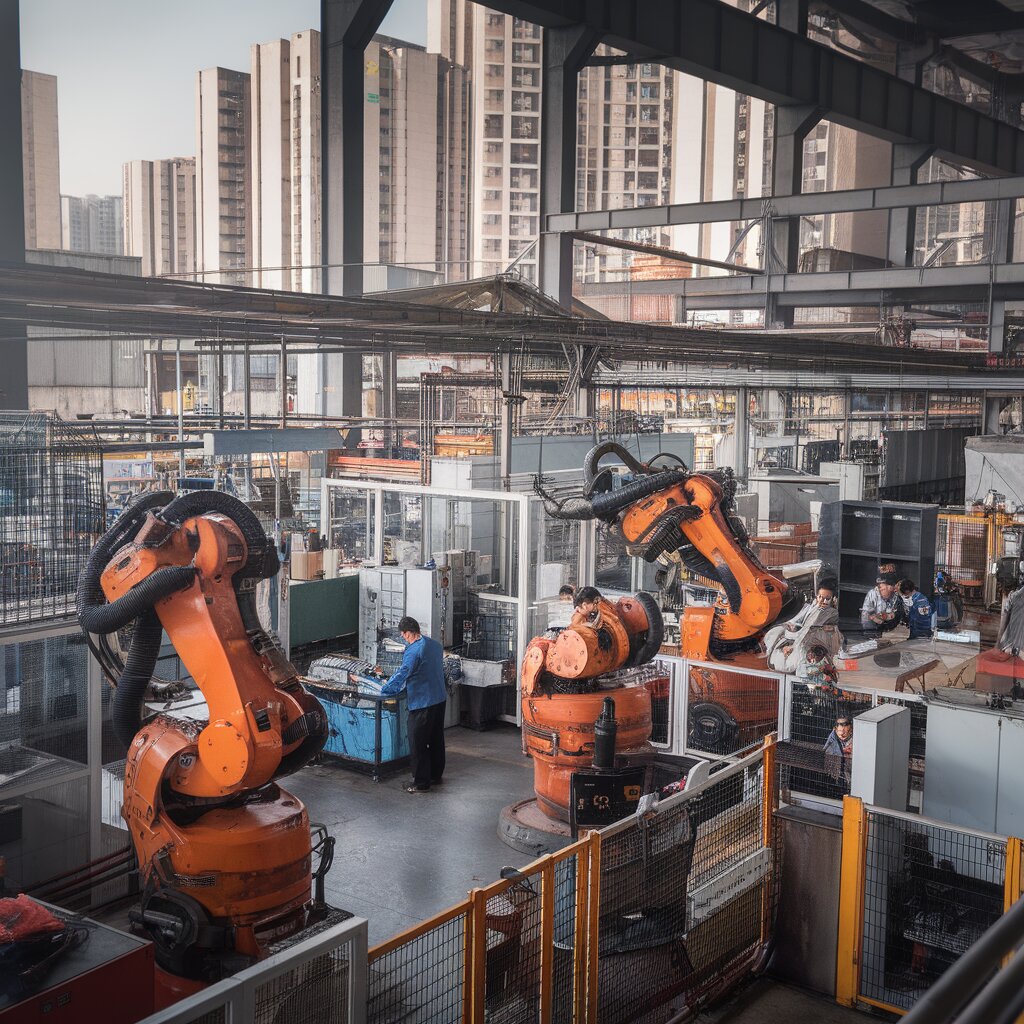In a bold move to reshape its economic landscape, China is channeling significant resources into industrial robotics to drive growth, underscoring its status as the world’s largest robot market. This strategy was emphasized at the recent Third Plenum, where Beijing unveiled comprehensive economic policies aimed at integrating cutting-edge automation into various sectors.
“China’s extraordinary advances in industrial robot automation are groundbreaking,” said Marina Bill, President of the International Federation of Robotics (IFR). She highlighted that China surpassed the 1.5 million-unit mark in operational robot stock two years ago, making it the only country with such a vast number. In 2022 alone, China installed 290,258 units, capturing a remarkable 52% of the global market.
Diverse Industry Growth Fuels Demand
The booming demand for robots has attracted both local and international suppliers to set up and expand their production facilities within China. This growth has been particularly pronounced in the automotive sector since 2010, with China emerging as the world’s largest market and production hub for cars, including electric vehicles, showcasing significant potential for future expansion.
China’s rise as a major producer of electronic devices, batteries, semiconductors, and microchips has shifted the main demand driver for industrial robots from the automotive industry to the electrical and electronics industry since 2016. Other sectors are also increasingly adopting advanced automation technologies to enhance their capacities.
China Eyes Global Expansion
Despite China’s dominance in its domestic market, its robot exports remain limited. “Chinese robots are just beginning to make their mark abroad,” said Xiaogang Song, Executive Director and Secretary-General of the China Robot Industry Alliance (CRIA). “Currently, exported robots account for less than 5% of total production.”
Chinese robotics companies are now venturing overseas by forming alliances with local partners and hiring local talent. Establishing brand credibility through technological advancements and improved services is a gradual process that will determine their success in foreign markets. The IFR also pointed out that Chinese companies hold advantages in specific areas like vision systems and AI applications, along with low production costs, which position them favorably in the global market.
Strategic Focus on Humanoid Robots
China’s focus on robotics receives robust government backing, as was made clear during the third plenary session of the 20th National Congress of the Communist Party held from July 15 to 18. In November 2023, Beijing’s Ministry of Industry and Information Technology (MIIT) set ambitious national goals for the development of humanoid robots. The MIIT anticipates that humanoids will become a disruptive force in technology and aims to achieve mass production by 2025. This document also highlighted the need for an innovation system to facilitate key technological breakthroughs.
Adding to this momentum, five industry organizations based in Shanghai formulated guidelines for the development of humanoid robots, emphasizing the importance of safeguarding human dignity and ensuring security. During the recent World Robot Conference, nearly 30 companies showcased various humanoid models, demonstrating the sector’s rapid innovation pace.
“China’s ambitious plans may face numerous obstacles, but transparent strategies and successful execution can significantly mitigate these risks,” noted Aaron Prather, Director of the Robotics & Autonomous Systems Program at ASTM International. He emphasized that while China has charted a clear course for its robotics industry, other nations must develop their strategic plans to avoid being left behind.
China’s strategic investments and meticulous planning in the robotics sector are set to transform its economic growth trajectory, positioning it at the forefront of global innovation and industrial automation.


